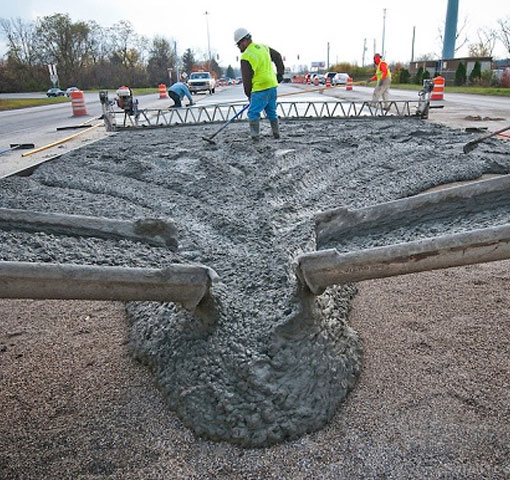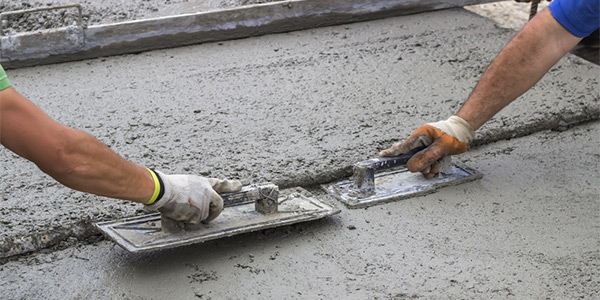A Comprehensive Guide to Common Concrete Repair Works and How to Address Them
In the world of building and construction and property maintenance, concrete works as a stalwart foundation. Even the most durable of products is not resistant to put on and tear over time. From cracks and spalling to scaling and discoloration, the indications of concrete distress can show up in various kinds. Recognizing the source behind these usual concerns and possessing the understanding to effectively resolve them is vital to guaranteeing the long life and structural integrity of concrete surfaces. So, just how can one browse the intricacies of concrete fixings with self-confidence and effectiveness?

Identifying Common Concrete Issues
Recognizing typical concrete problems is a vital preliminary step in successfully resolving structural honesty worries in buildings and facilities. By acknowledging these problems early on, professionals can execute prompt and appropriate fixings, protecting against further damage and making certain the long life of the structure. One common issue usually encountered is concrete cracking, which can arise from different variables such as shrinkage, negotiation, or overloading. These cracks not only jeopardize the visual allure of the structure but additionally show underlying structural concerns that need to be dealt with quickly.
Another usual issue is spalling, where items of concrete break off from the surface, exposing the support bars to potential rust. By recognizing and recognizing these usual concrete concerns, experts can proactively take care of and correct them, guaranteeing the safety and toughness of the building or facilities in question.
Understanding Root Causes Of Concrete Damages
What factors add to the damage of concrete structures over time? Concrete damage can come from numerous sources, with among the primary culprits being water seepage. When water penetrates concrete surface areas, it can cause freeze-thaw cycles, causing splits and compromising the structure. In addition, direct exposure to severe weather, such as severe warm or cold, can speed up the deterioration procedure. Chemical exposure is an additional substantial element that can trigger concrete damages. Chemicals like de-icing salts, acids, and toxins can respond with the concrete, causing deterioration of the strengthening steel within the framework. Poor building techniques, including inadequate curing, improper mix proportions, or not enough compaction, can also add to concrete damage in time. Heavy tons, structural overloading, and absence of upkeep can all intensify the wear and tear on concrete frameworks, making them extra at risk to cracks, spalling, and architectural failing. Recognizing these reasons is crucial for applying reliable repair service and maintenance approaches to lengthen the life expectancy of concrete structures.

DIY Solutions for Concrete Repair Works
To successfully resolve typical concrete fixings at home, property owners can utilize useful diy solutions that are both cost-efficient and fairly uncomplicated to execute. One usual concern that DIY fanatics can deal with is repairing little splits in concrete surface areas.
An additional DIY remedy for concrete repairs is addressing spalling or damaged concrete. Home owners can make use of a chisel and hammer to get rid of loosened concrete around the broken location before applying a bonding adhesive and new concrete blend. concrete slab. This approach aids restore the surface area to its initial state and protects against further degeneration
Moreover, for concrete surfaces that have actually started to show indicators of deterioration, using a concrete sealer can assist safeguard the product from water damages, staining, and basic wear. By complying with producer directions, people can conveniently apply the sealer making use of a roller or sprayer for resilient outcomes.
Hiring Expert Concrete Fixing Provider
Engaging experienced professionals for concrete fixing solutions guarantees precision and More about the author expertise in recovering structural integrity to broken surface areas. Expert concrete fixing services use an array of benefits that DIY options might not offer. These specialists have the expertise and experience to accurately examine the extent of the damages and suggest one of the most reliable fixing methods.
Furthermore, employing professionals for concrete repairs can conserve money and time over time. They have actually accessibility to specialized tools and materials, allowing them to complete the fixings successfully and successfully. This can prevent further wear and tear of the concrete framework and minimize the need for expensive repair services in the future.
Specialist concrete fixing solutions likewise focus on security, guaranteeing that the fixed surfaces fulfill industry criteria and laws. By entrusting your concrete fixing requires to experts, you can have comfort understanding that the job will certainly be done properly the very first time. Eventually, purchasing expert concrete repair services can help lengthen the life-span of your concrete structures and keep their visual allure.

Preventative Upkeep Tips for Concrete
Applying a proactive strategy to concrete upkeep can dramatically extend the lifespan and toughness of concrete frameworks. Using a quality concrete sealant can help safeguard the surface area from his response water penetration, freeze-thaw cycles, and other environmental variables that can weaken the concrete. Proper water drainage around concrete frameworks is crucial to stop water buildup, which can erode the concrete over time.
Conclusion
In conclusion, resolving common concrete repair work requires a thorough understanding of the issues available, their causes, and suitable repair methods. Whether deciding for DIY services or hiring expert services, it is essential to focus on preventative upkeep to lengthen the life expectancy of concrete structures. By determining and dealing with concrete issues quickly, homeowner can make certain the long-term toughness and this contact form security of their concrete surfaces.